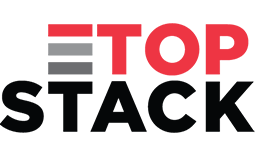3 Ways to Turn Stress into Productivity

Stress is a strange emotion. It’s a psychological trigger that can lead to increased anxiety, but also more activity. On one hand, the studies show that stress can cause all kinds of health problems, like depression, heart disease, and insomnia. Chronic stress can wreck your health.
On the other hand, stress can inspire some of us to produce our best work. Which is it for you? Since everyone experiences stress, perhaps there’s a way to turn this negative emotion into a positive. Here’s how to turn something stressful into higher efficiency and productivity.
Harness Your Stress by Recognizing
An article in the Harvard Business Review suggests the first step toward conquering stress is to simply acknowledge its existence. It suggests that stress has several positive attributes we can benefit from. Being stressed reminds us of the cliché, “if it doesn’t kill you it’ll make you stronger,” and that is certainly true. But to reap the benefits of being stressed out, we must acknowledge the impact it is having on our lives. The Harvard article says that stress causes the human response of fight or flight; our heart rate and blood pressure can increase along with other visceral reactions. Understanding that what’s making you anxious is the dopamine being released in your body is just one way to use those feelings as a motivator. But recognizing these reactions can stop these physical responses. This allows you to take a more deliberate approach to your reaction to the stress you’re under.
Change Your Approach
Once you recognize your stress, you can take steps to master it. Taking steps to use stress as a challenge to help you achieve more is a good way to manage it. One study found that people who view their stress as a challenge instead of a negative problem hampering them were able to maintain their energy and focus without getting sick or emotionally exhausted. Taking stress and using it to help you overcome hurdles will give you control over your feelings of being overwhelmed by negative emotions. Instead of viewing stress as a negative, use it as the impetus to help you increase your performance and productivity.
Now Get Motivated
If you’re not experiencing stress, the body will not trigger the heightened energy that comes from stress. That’s why the final step toward conquering stress and using it to your advantage is to leverage it to get motivated. Could stress push you to meet a deadline or prepare for a last-minute meeting? The energy that comes from being stressed implies activity – which is exactly what stress can spur you on to. Stress can cause you to take action, completing tasks in record time. If you are a procrastinator, you’ll instinctively understand how the stress that comes from a deadline can motivate you to get it done.
So, use your stress, don’t let it paralyze you. By acknowledging your stress and recognizing it for the tool that it can be, you could increase your productivity and turn a negative into a positive.
To learn more about how you can turn stress into productivity, contact Top Stack. We can help you take control of your career.
















